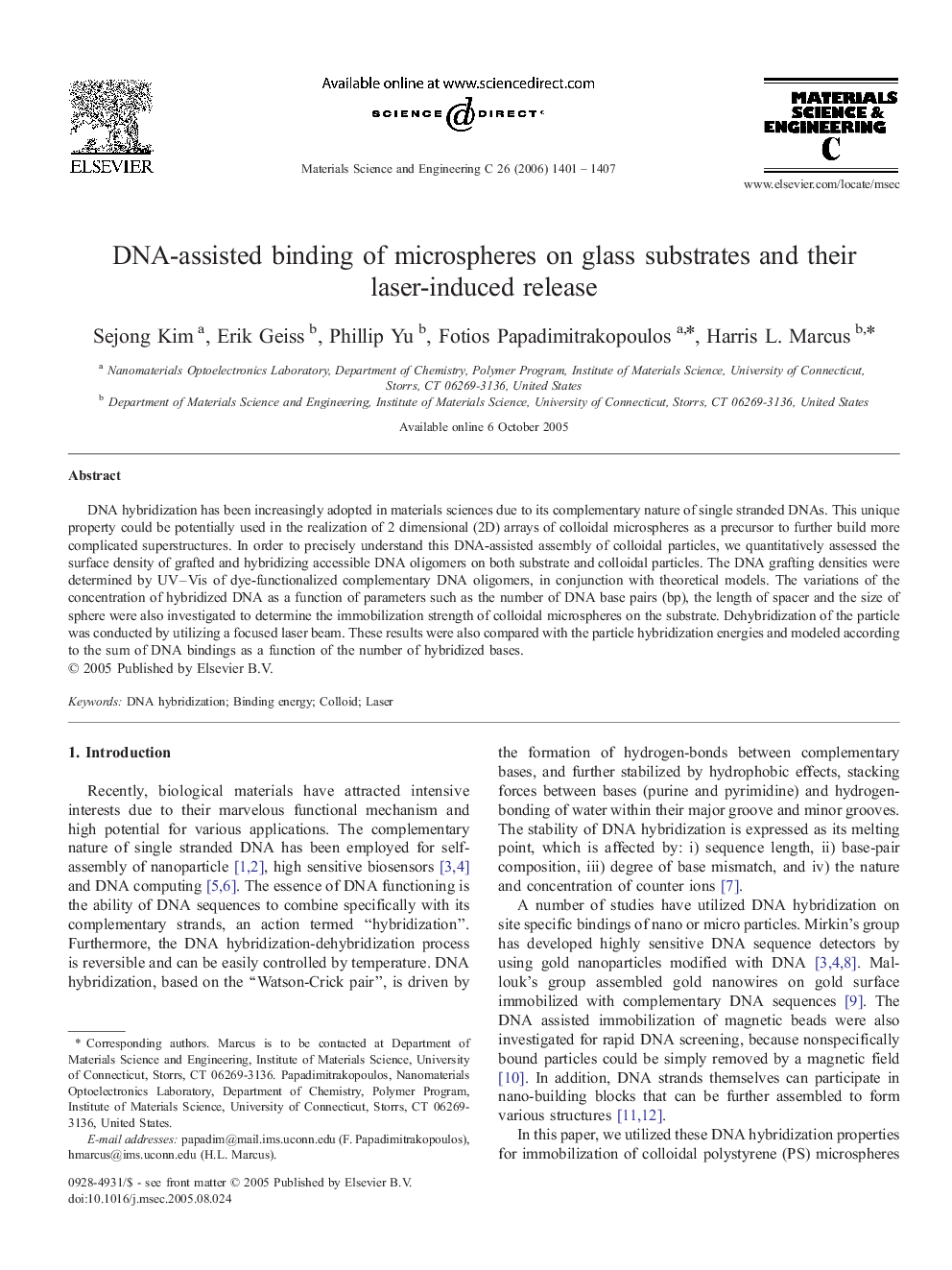| کد مقاله | کد نشریه | سال انتشار | مقاله انگلیسی | نسخه تمام متن |
|---|---|---|---|---|
| 1431157 | 987221 | 2006 | 7 صفحه PDF | دانلود رایگان |

DNA hybridization has been increasingly adopted in materials sciences due to its complementary nature of single stranded DNAs. This unique property could be potentially used in the realization of 2 dimensional (2D) arrays of colloidal microspheres as a precursor to further build more complicated superstructures. In order to precisely understand this DNA-assisted assembly of colloidal particles, we quantitatively assessed the surface density of grafted and hybridizing accessible DNA oligomers on both substrate and colloidal particles. The DNA grafting densities were determined by UV–Vis of dye-functionalized complementary DNA oligomers, in conjunction with theoretical models. The variations of the concentration of hybridized DNA as a function of parameters such as the number of DNA base pairs (bp), the length of spacer and the size of sphere were also investigated to determine the immobilization strength of colloidal microspheres on the substrate. Dehybridization of the particle was conducted by utilizing a focused laser beam. These results were also compared with the particle hybridization energies and modeled according to the sum of DNA bindings as a function of the number of hybridized bases.
Journal: Materials Science and Engineering: C - Volume 26, Issue 8, September 2006, Pages 1401–1407